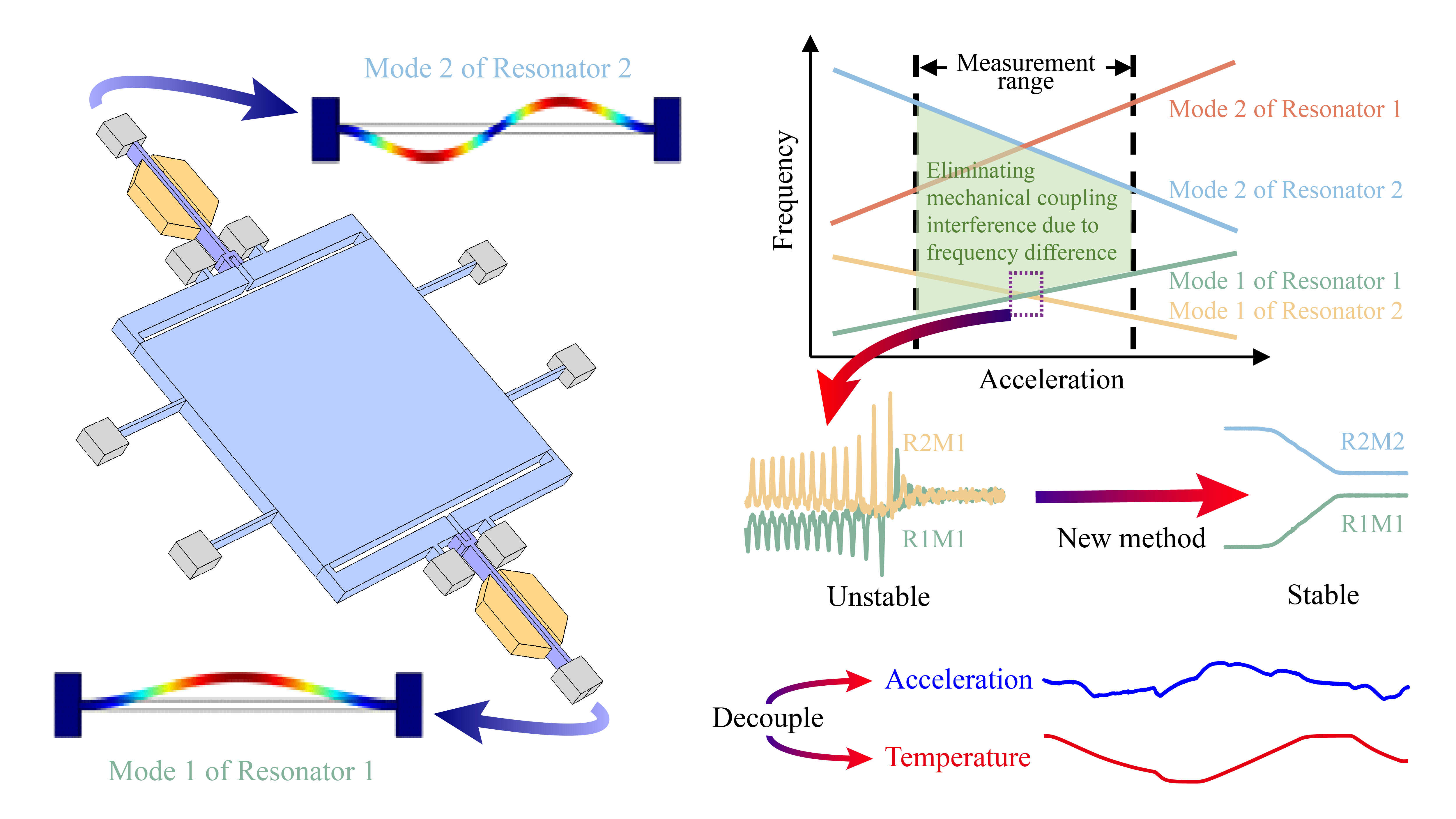Dual-Mode Design Significantly Enhances MEMS Accelerometer Performance, Study Finds
A recent study published in Microsystem & Nanoengineering introduces an innovative solution to the persisting challenges in Micro-Electro-Mechanical Systems (MEMS) resonant accelerometers: temperature drift and measurement dead zones. By adopting a dual-mode operating scheme that effectively separates the operating frequencies of the differential beams, the researchers achieved notable improvements in the sensor's accuracy and overall performances.
Led by Prof. ZOU Xudong and his team from the Aerospace Information Research Institute (AIRCAS) of the Chinese Academy of Sciences (AIRCAS), the study shows that driving one beam in its first resonant mode and the other in its second mode, effectively enhances temperature compensation and preventing the typical modal localization that leads to dead zones. The dual-mode design preserves the beams' geometrical symmetry, which is critical for rejecting temperature-induced errors and ensuring stable sensor performance.
Experimental results show that the dual-mode method reduces temperature-induced drift by more than 280 times, a significant improvement over conventional methods. Allan deviation and PSD analysis indicates a remarkable reduction in low-frequency noise, improving the precision and stability of the accelerometer over extended periods. Specifically, the temperature drift was reduced from approximately 342 mg to 1.19 mg after differential compensation, confirming the effectiveness of the dual-mode approach in suppressing temperature-related instability. In addition, the frequency overlap between the two beams was eliminated, solving the dead zone issue that typically arises when the frequencies of differential beam frequencies intersect.
This dual-mode technique offers a cost-effective solution to enhance the performance of MEMS accelerometers, particularly for applications in inertial navigation and vibration monitoring, where high accuracy and reliability are essential. Beyond its immediate benefits, the method also paves the way for further developments in multi-mode MEMS systems, with potential applications across consumer electronics, robotics, and industrial monitoring.

Operating principles and system performance of the differential resonator, featuring modal separation to avoid energy coupling and enable temperature-compensated acceleration sensing. (Image by AIRCAS)

Temperature calibration and cycling setup for the MEMS resonant accelerometer. (Image by AIRCAS)

Dead-zone test setup using gravity vector changes generated by a precision indexing head. (Image by AIRCAS)



News & Events